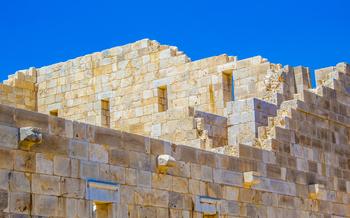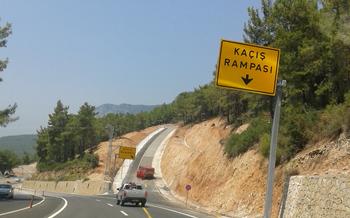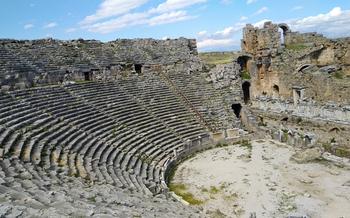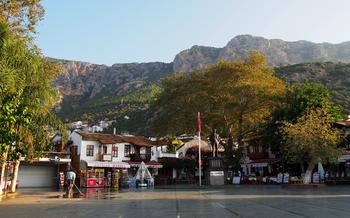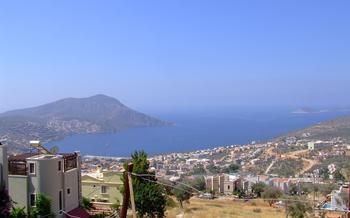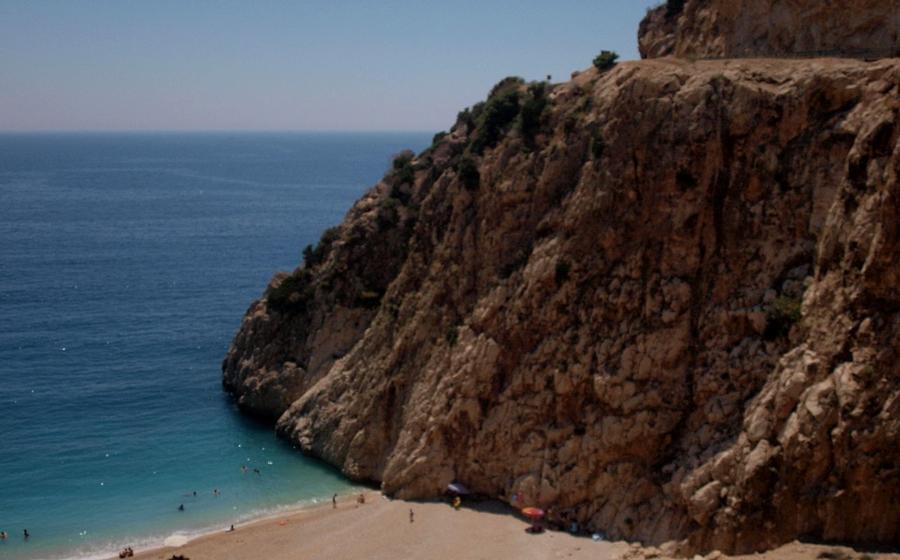
Patara Ruins
- A Journey Through History: Patara Ruins
- A City of Many Firsts
- Unveiling the Ancient Theater
- Exploring the Temple of Apollo
- Strolling Along the Colonnaded Street
- Uncovering the Roman Baths
- Visiting the Granary
- Peering into the Agora
- Exploring the Byzantine Church
- A Photographer's Paradise
- Tips for a Memorable Visit
- Guided Tours: Enhancing Your Experience
- Combining Patara with Nearby Attractions
- Insider Tip: A Hidden Gem
A Journey Through History: Patara Ruins
Journey back in time as you explore the Patara Ruins, a testament to Turkey's rich and diverse history. Located near the picturesque town of Kalkan, these ruins offer a glimpse into the ancient Lycian civilization that once flourished in this region. Patara, a city of great significance, was once the birthplace of Saint Nicholas, the patron saint of sailors and children. It also served as the main port of the Lycian League and later became an important Roman city. As you wander through the ruins, you'll encounter a treasure trove of ancient wonders that will transport you back to a time when Patara was a bustling hub of trade, culture, and religion.
A City of Many Firsts
Patara holds a unique place in history as the birthplace of Saint Nicholas, the renowned patron saint of sailors and children. The city was also the main port of the Lycian League, a powerful confederation of ancient cities that played a significant role in the region's politics and economy. Moreover, Patara flourished as a prominent Roman city, leaving behind an impressive legacy of well-preserved ruins that showcase its grandeur and historical importance.
Unveiling the Ancient Theater
Amidst the ruins of Patara, the ancient theater stands as a testament to the city's cultural and artistic heritage. Built in the 2nd century BC, it is one of the largest and best-preserved theaters in the region. Constructed using local limestone, the theater blends harmoniously with the surrounding landscape.
With a seating capacity of approximately 6,000 spectators, the theater provided entertainment and spectacle to the ancient inhabitants of Patara. The stage, adorned with intricate carvings and sculptures, served as a platform for theatrical performances, musical concerts, and gladiatorial contests. The acoustics of the theater are remarkable, allowing the actors' voices to carry clearly to every corner of the auditorium.
In recent years, the theater has undergone extensive restoration efforts, bringing it back to its former glory. The stage has been reconstructed, and the seating tiers have been meticulously repaired. Today, the theater once again hosts cultural events and performances, allowing visitors to experience the ambiance and grandeur of ancient Patara.
Exploring the Temple of Apollo
A Beacon of Divine Worship
In the heart of Patara, nestled amidst the ancient ruins, stands the Temple of Apollo, a testament to the city's religious devotion. Dedicated to the revered sun god, this sacred edifice once served as a prominent spiritual center, drawing pilgrims and worshippers from far and wide.
As you approach the temple, its grandeur unfolds before you. Majestic columns, crafted with precision, soar towards the heavens, their intricate carvings narrating tales of ancient mythology. The well-preserved façade hints at the splendor that once adorned this sacred space.
Within the temple's hallowed walls, a sense of awe pervades the atmosphere. The inner sanctum, once home to the revered statue of Apollo, radiates an air of mystery and reverence. Here, offerings were made, prayers whispered, and divine guidance sought.
One of the temple's most captivating features is the remains of a sacred oracle. In ancient times, oracles were believed to possess the power to communicate with the divine, offering prophecies and guidance to those who sought their wisdom. The presence of an oracle here speaks to the temple's significance as a spiritual hub.
Exploring the Temple of Apollo is a journey through history and devotion. Its ruins evoke a bygone era, when the gods were revered, and their temples were adorned with the finest artistry. As you wander through its hallowed halls, let your imagination transport you back to a time when Patara's spiritual fervor burned bright, and the Temple of Apollo stood as a beacon of divine worship.
Strolling Along the Colonnaded Street
As you venture further into the ruins of Patara, you will stumble upon the grand Colonnaded Street, a testament to the city's former grandeur. This impressive thoroughfare once served as the main artery of Patara, connecting the harbor to the acropolis.
The street is flanked by towering columns, their weathered surfaces hinting at the passage of time. These columns, once immaculate and gleaming, now stand as silent sentinels, guarding the secrets of Patara's past.
At the far end of the Colonnaded Street, you will encounter an imposing gateway, marking the entrance to the city's sacred precinct. This gateway, with its intricate carvings and towering arch, offers a glimpse into the architectural prowess of Patara's artisans.
As you stroll along the Colonnaded Street, take a moment to imagine the bustling activity that once filled this space. Merchants peddled their wares, citizens went about their daily lives, and the sounds of laughter and conversation echoed through the air.
The Colonnaded Street is not merely a historical relic; it is a tangible connection to the past, inviting you to step into the shoes of ancient Patarans and experience the grandeur of their city.
Uncovering the Roman Baths
In the heart of Patara, you'll stumble upon the remains of an impressive Roman bath complex, a testament to the city's advanced engineering and appreciation for hygiene. As you step through the grand entrance, imagine the bustling atmosphere of ancient bathers seeking rejuvenation and relaxation.
The complex boasts various chambers designed for different purposes, each offering a unique experience. The frigidarium, or cold room, provided a refreshing contrast to the sweltering heat of Patara. The tepidarium, or warm room, transitioned bathers into the hottest chamber, the caldarium. Here, they could indulge in a soothing steam bath, releasing toxins and easing muscle tension.
The baths also featured a palestra, an exercise area where athletes engaged in physical activities to prepare for competitions or simply maintain their fitness. The complex's sophisticated plumbing system ensured a continuous supply of fresh water, while intricate mosaics adorned the floors and walls, adding a touch of beauty to the functional space.
Exploring the Roman baths of Patara is like stepping back in time, experiencing the daily routines and rituals of the city's inhabitants. It's a fascinating glimpse into the advanced urban planning and engineering skills of the Roman Empire, showcasing their commitment to public health and well-being.
Visiting the Granary
In the heart of Patara's sprawling ruins, you'll encounter an impressive structure that once served as the city's granary. This massive building, constructed with remarkable engineering skill, stands as a testament to Patara's agricultural significance in ancient times. Its vaulted ceilings and sturdy walls have withstood the test of time, providing a glimpse into the city's role as a vital center for the storage and distribution of grain and other commodities. Explore the vast interior of the granary, marveling at its size and imagining the bustling activity that once took place within its walls.
Peering into the Agora
In the heart of ancient Patara, where commerce and civic life once flourished, lies the Agora. This bustling marketplace served as a central gathering place for the city's inhabitants. As you step into the Agora, imagine the vibrant atmosphere of traders hawking their wares, shoppers bartering for goods, and citizens engaging in lively discussions.
The Agora's well-preserved ruins offer a glimpse into Patara's economic and social dynamics. Explore the remains of shops that once lined the streets, each catering to different needs and desires. From pottery and textiles to exotic spices and imported goods, the Agora was a hub of commercial activity.
Moreover, the Agora was not merely a place of business but also a center of civic life. Public buildings, such as temples and government offices, were strategically located within the Agora, facilitating administrative and religious functions. Here, citizens could gather to discuss important matters, make offerings to the gods, and participate in civic ceremonies.
As you wander through the Agora, let your imagination transport you back in time to the bustling streets of ancient Patara. Picture merchants peddling their goods, shoppers haggling over prices, and philosophers engaging in passionate debates. The Agora was the beating heart of Patara, a place where commerce, politics, and social interaction converged.
Exploring the Byzantine Church
Amidst the ruins of Patara stands a testament to the city's Christian heritage - the Byzantine Church. This well-preserved architectural gem showcases the intricate craftsmanship and artistic prowess of the Byzantine era. Constructed during the 5th or 6th century AD, the church boasts impressive features that transport visitors back in time.
Adorned with stunning mosaics, the interior walls of the church narrate biblical scenes with vibrant colors and intricate details. These mosaics depict stories from the Old and New Testaments, offering a glimpse into the religious beliefs and artistic expressions of the Byzantine period. The central dome of the church, a symbol of heavenly transcendence, is adorned with a mosaic depicting Christ Pantocrator, surrounded by angels and saints.
Despite the passage of time and the effects of natural elements, the mosaics in the Byzantine Church have retained their brilliance and beauty, captivating the eyes of visitors. These sacred artworks provide a unique opportunity to delve into the history of Christianity in Patara and appreciate the enduring legacy of Byzantine artistry.
A Photographer's Paradise
Patara is a haven for photographers, offering a myriad of captivating subjects to capture. As the sun begins its descent, the sky transforms into a canvas of vibrant hues, painting the ancient ruins in a warm, golden light. This enchanting spectacle is a feast for the eyes and a photographer's dream.
The acropolis, perched atop a hill overlooking the ruins, provides a panoramic vista that will leave you breathless. From this vantage point, you can frame the entire site, capturing the grandeur of the theater, the temple, and the sprawling city below. The interplay of light and shadow creates dramatic effects, enhancing the sense of history and wonder.
As you wander through the ruins, keep an eye out for intricate details that tell the story of Patara's past. The weathered columns, the worn steps, and the remnants of ancient inscriptions all make for compelling subjects. The interplay of light and shadow creates dramatic effects, adding depth and dimension to your photographs.
Patara is a place where history, nature, and photography converge, offering endless opportunities to capture the essence of this ancient city. Whether you're a seasoned professional or an enthusiastic amateur, the ruins of Patara will provide you with an unforgettable photographic experience.
Tips for a Memorable Visit
To make the most of your visit to the Patara Ruins, consider these practical tips:
Choose the right time of day: Avoid the midday heat by visiting early in the morning or late afternoon when the temperatures are more pleasant. The ruins are particularly magical during sunset, offering stunning photo opportunities.
Wear comfortable shoes: The ruins cover a large area, so be prepared to do some walking. Wear comfortable shoes with good support to avoid blisters or sore feet.
Bring water and sunscreen: The Patara Ruins are mostly exposed, with little shade. Remember to bring plenty of water and sunscreen to stay hydrated and protected from the sun.
Guided Tours: Enhancing Your Experience
While exploring Patara's ruins on your own is undoubtedly rewarding, joining a guided tour can elevate your experience to new heights. Led by knowledgeable and passionate historians, these tours offer a plethora of benefits that will enrich your understanding of this ancient city.
Professional guides possess an intimate understanding of Patara's history, culture, and architecture. They will regale you with tales of the city's prominent figures, recount the legends that have been passed down through generations, and provide context to the ruins you encounter. Their insights will bring the stones to life, allowing you to visualize the bustling streets, vibrant marketplaces, and grand temples that once stood here.
One of the most significant advantages of joining a guided tour is the opportunity to skip the line and gain priority access to the ruins. This is particularly beneficial during peak tourist season when queues can be long and the heat can be oppressive. With a guided tour, you can breeze past the crowds and make the most of your time exploring Patara's wonders without wasting precious moments waiting in line.
In-depth historical context is another key aspect that guided tours provide. Your guide will not only point out the main attractions but also delve into the finer details and stories behind each site. They will explain the significance of the various architectural features, the purpose of different buildings, and the role that Patara played in the wider context of ancient Lycia and the Roman Empire. This comprehensive knowledge will help you gain a profound appreciation for the city's rich heritage and its enduring legacy.
Combining Patara with Nearby Attractions
While in the region, venture beyond Patara's ruins to discover other captivating destinations. Embark on a scenic drive to Kalkan Old Town, a charming harbor town with cobblestone streets, whitewashed houses, and an array of shops and restaurants. Indulge in the local cuisine and soak up the vibrant atmosphere.
For a refreshing change of pace, head to Kaputas Beach, renowned for its crystal-clear turquoise waters and stunning backdrop of towering cliffs. Relax on the sandy shores, take a dip in the refreshing sea, or embark on a snorkeling adventure to explore the vibrant underwater world.
History buffs will delight in exploring the ancient ruins of Xanthos and Letoon, located a short distance from Patara. Xanthos, once the capital of Lycia, boasts impressive Lycian tombs, an acropolis, and a well-preserved theater. Letoon, a UNESCO World Heritage Site, features the ruins of a temple complex dedicated to the goddess Leto and her children, Apollo and Artemis.
Insider Tip: A Hidden Gem
While in the vicinity of Patara, don't miss the opportunity to explore the hidden gem of Aperlai, an ancient city located just a short drive away. As you make your way to Aperlai, the scenic countryside unfolds, dotted with olive groves and traditional Turkish villages. Upon arrival, you'll be greeted by the ruins of an ancient theater, a testament to the city's once-thriving cultural scene.
Aperlai offers a more intimate and serene experience compared to the larger Patara. Wander through the ruins and discover the remains of a Byzantine church, adorned with intricate mosaics depicting biblical scenes. Explore the ancient city walls, offering panoramic views of the surrounding landscape.
The lack of crowds in Aperlai allows you to immerse yourself in the tranquility of the site and truly appreciate its historical significance. It's an ideal place to delve deeper into the rich history of the region and capture some stunning photographs without the hustle and bustle of other popular tourist destinations.
